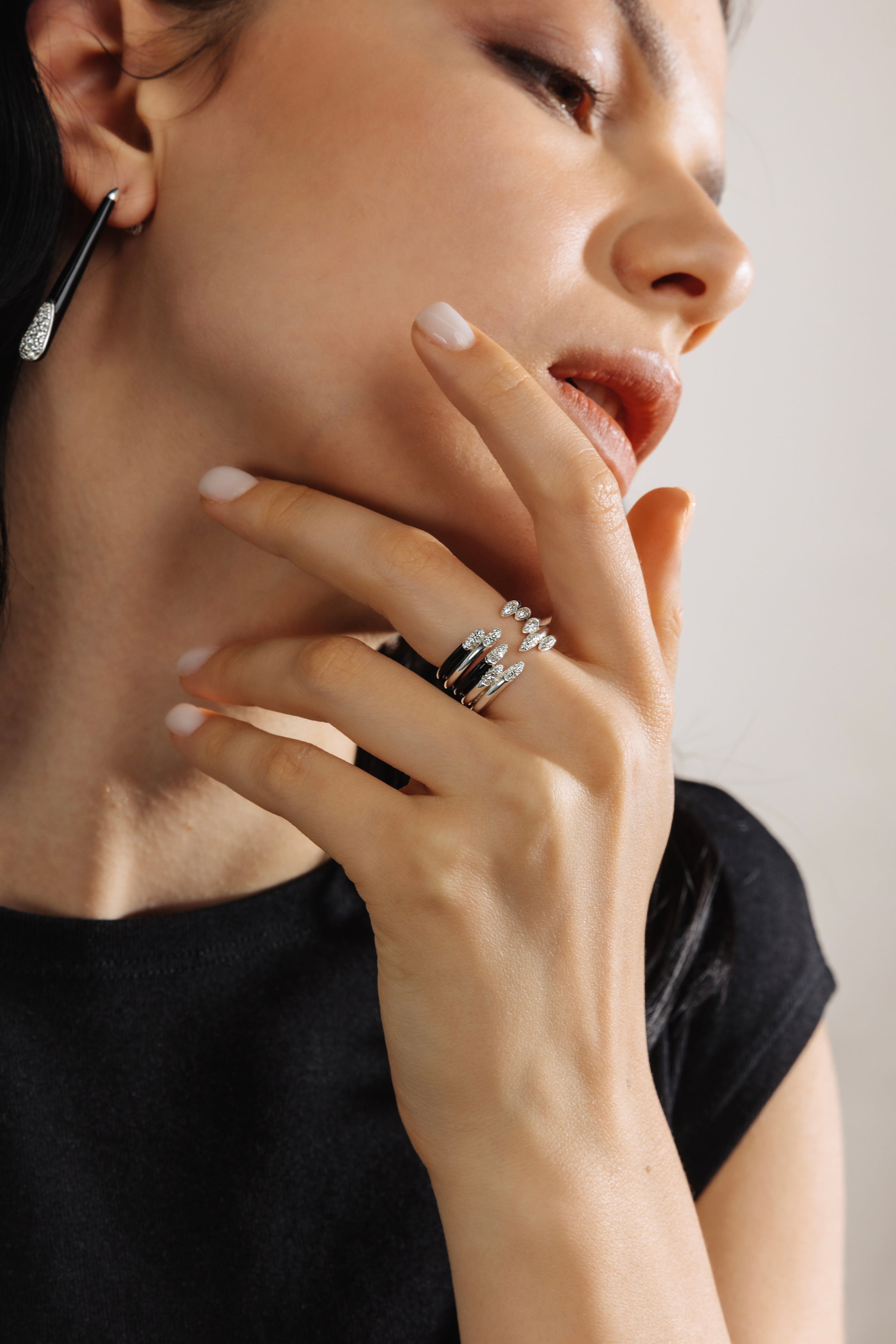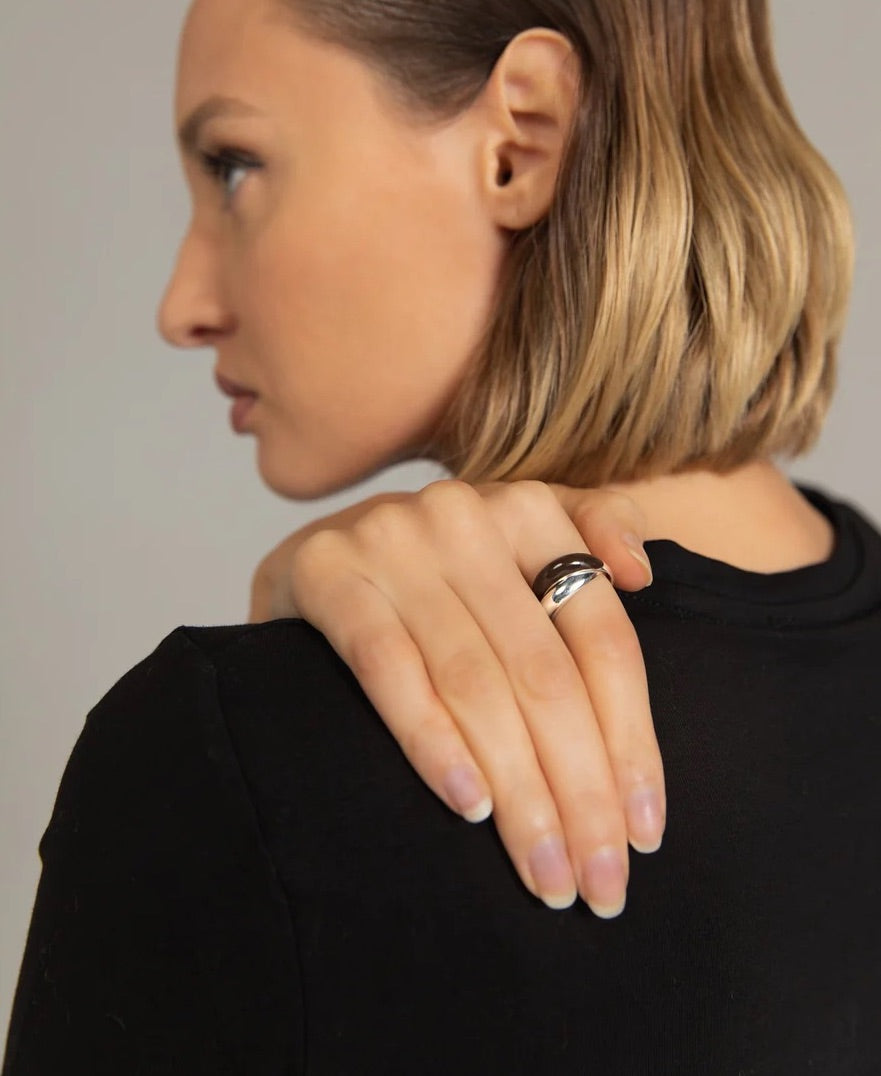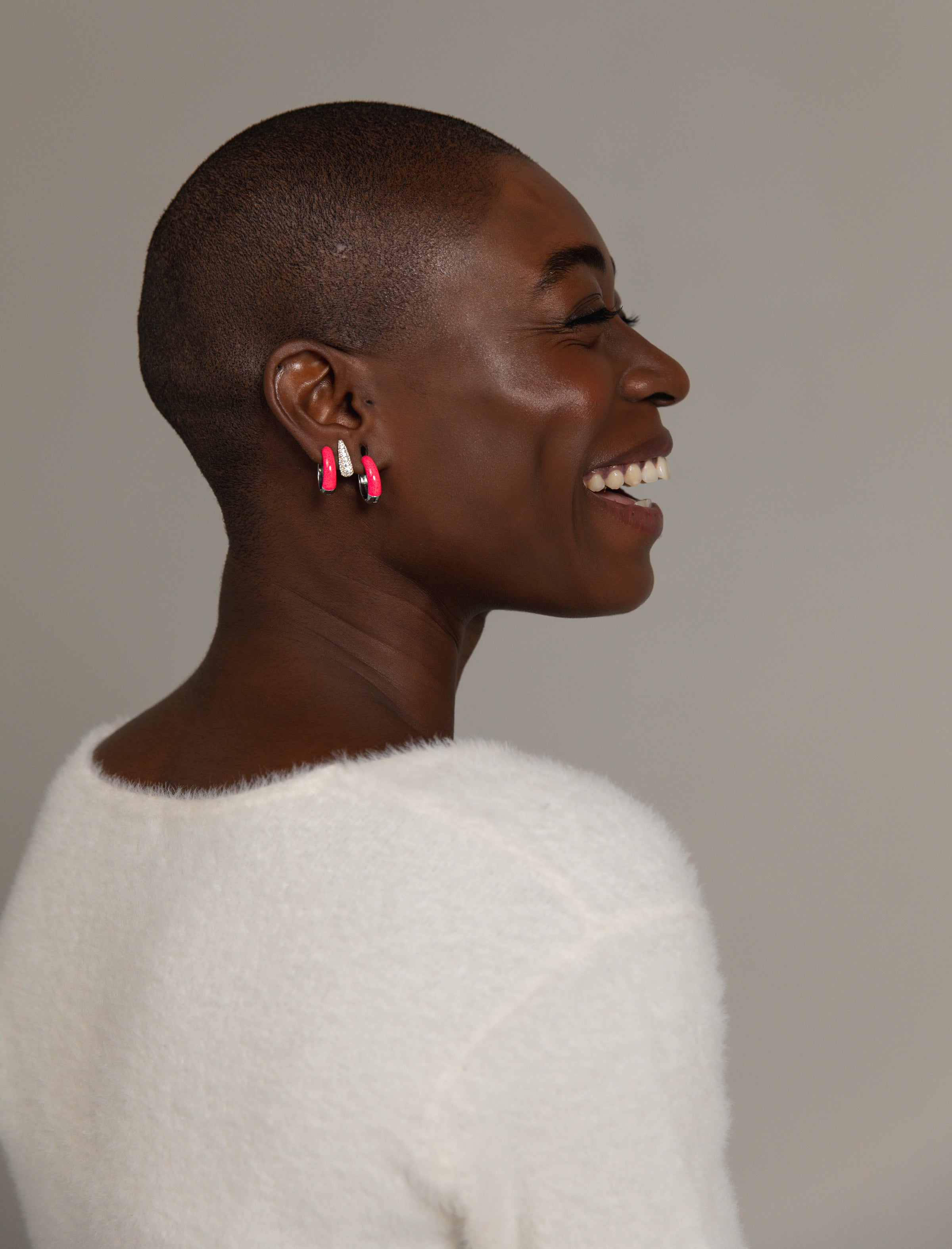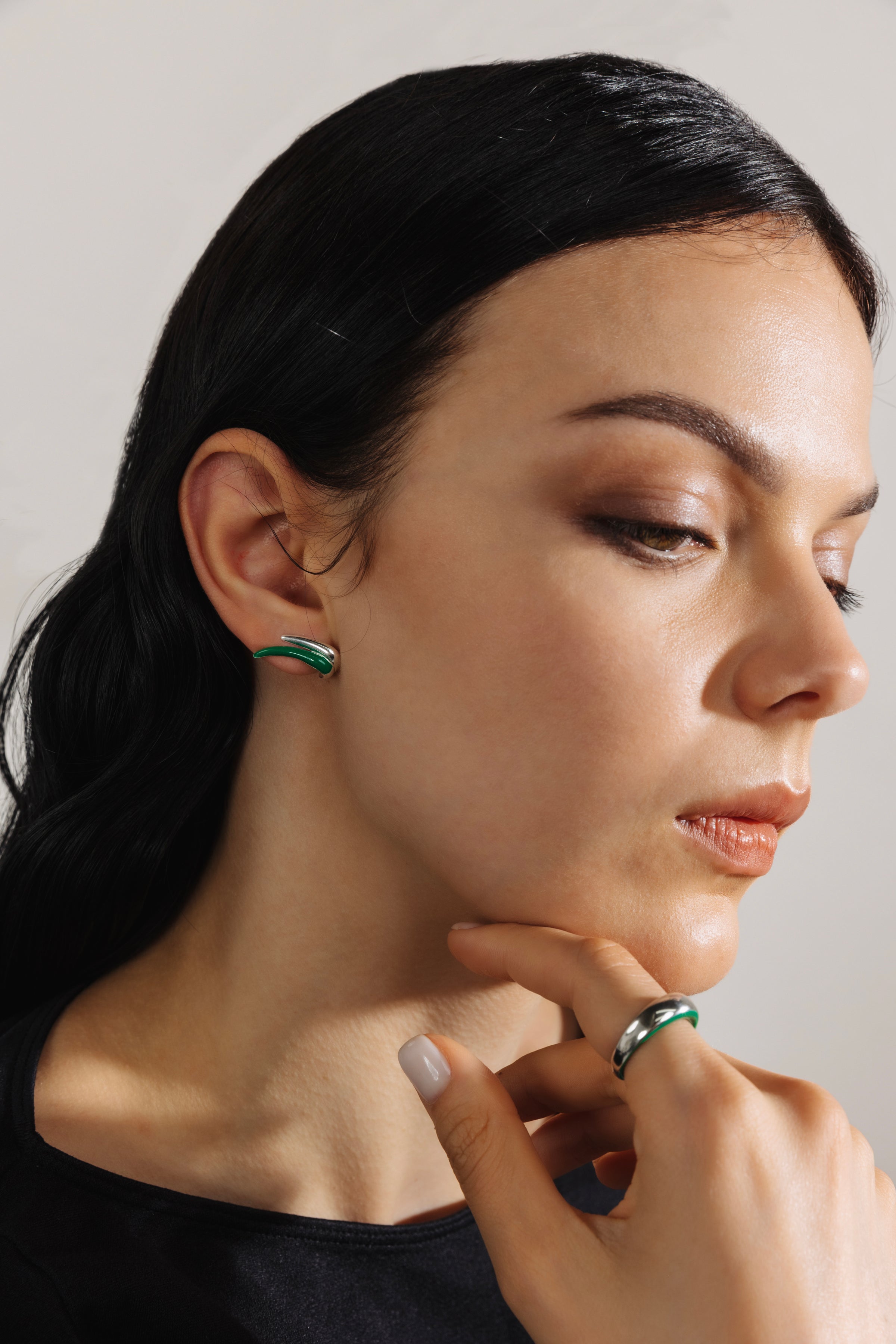Rebellious Shades: 5 Women, 5 Colors
In a world where color is often transcended by the hues of clothing and walls, we want to celebrate women who have left an indelible mark not only on the social and cultural landscape but also through the bold symbolism of colors. These women are more than mere historical figures; they are visionaries, rebels, and catalysts for significant change. Through the prism of their contributions and choices, we explore how colors have played a key role in shaping their stories and how they have defined themselves through them. These are women who have changed the world, made their voices heard, and, in the process, sought and found themselves in the colors they chose to wear and embody. Through this exploration, we celebrate the power of diversity and authenticity, highlighting how the courage to express oneself through colors can be a revolutionary act that resonates through time.

Coco Chanel and the Essence of Black
Chanel, the rebellious designer who built an empire in the fashion world, will always be remembered as one of the most influential figures in the industry, precisely because she redefined the modern look for women. Born in challenging circumstances, her childhood was marked by the loss of her mother and years spent in an orphanage. Despite the challenges, Coco achieved extraordinary success. Karl Lagerfeld, an admirer of Chanel, emphasized her journey from "zero education and incredibly poor parents." Chanel's revolution in women's fashion manifested with the introduction of pants, breaking the chains of restrictive clothing. Her iconic two-piece suit drew inspiration from men's fashion, blending fabrics and styles typically reserved for men.
While white, beige, gold, and red are colors intrinsically linked to Chanel, black holds a special place in her heart. For Coco Chanel, black represented more than just a color; it was a symbol of radiant feminine beauty, a way to accentuate the essential. This love for black resonates with the veils worn by the nuns in the orphanage, becoming a symbol of beauty born from difficult years. In the immortal realm of fashion, Chanel's black continues to be the timeless essence of elegance and strength. A tribute to a woman who turned black into an icon of timeless style.

Elizabeth Taylor and the Rebellious Purple
Elizabeth Taylor, an icon of style, always challenged conventions, both in her personal life and career. Throughout her extraordinary life, purple emerged as a symbol of her independence and determination.
When Taylor married her seventh husband, John Warner, an influential politician, her life took a turn toward semi-retirement, away from the Hollywood spotlight. However, her rebellious strength never waned. Surprisingly, shortly after the elections, a delegation of women who had managed Warner's campaign imposed a ban on her wearing purple during John's political meetings. This color, which had become her distinctive trademark with her legendary violet eyes, was forbidden for two long months. In a 1997 interview, Elizabeth recalled with bitterness the burden of being a politician's wife: "If the woman is the politician, it might be quite different. But if you're married to the politician, it's like having your lips sewn shut. You're a robot. They even tell you what you can wear. You can imagine how well that sat with me! I was told that I - I! - couldn't wear purple because it looked too regal."
However, after winning the elections, Republican women organized a lunch in her honor, and Elizabeth did not hesitate to showcase her vibrant Halston purple ensemble. Despite subduing her ego to John's for two years damaging her self-esteem, Elizabeth Taylor's light was never dimmed. While losing a bit of her identity in political life, she remained an icon of dignity and pride, a woman who wore the purple of rebellion with extraordinary grace.

Amelia Earhart and the Brown of Determination
Amelia Earhart, a bold aviation pioneer, has left an indelible mark in history, transforming the sky into a stage for her daring endeavors. In 1935, she completed a solo flight from Honolulu, Hawaii, to Oakland, California, breaking records and defying the expectations of her time.
Beyond the aerial heights, Amelia also captured attention for her distinctive style, and brown emerged as the emblem of her determination. Gracefully donning brown leather attire, she turned fashion into a bold statement of resilience and courage. The brown in her wardrobe was not merely an aesthetic choice but a tangible representation of the strength required to face adventures in the skies. This earthy shade became a symbol of her determination to overcome challenges, evoking the resilience of those ready to confront extraordinary scenarios.
Amelia's attire was more than mere fabrics and stitches; it was an expression of her life philosophy. Brown not only added a touch of elegance to her adventurous style but also conveyed the message that fashion can be a vehicle for expressing one's identity and aspirations.
In a world that often imposed limits on women, Amelia Earhart challenged conventions and demonstrated that audacity can manifest in multiple forms, even through one's distinctive style. Her legacy, woven with courage and originality, continues to inspire, inviting everyone to navigate their own skies and do so with style.

Elsa Schiaparelli and the Shocking Pink
The maven of Italian fashion, Elsa Schiaparelli, rocked the world in 1937 with the introduction of "Shocking Pink." This bold hue illuminated her path in an era dominated by more subdued palettes. Before her, the landscape was awash with black, navy blue, gray, brown, or beige for daytime. Elsa, with her audacity, embraced shocking pink, ice blue, and a variety of vibrant colors. She even dared to dye furs, challenging the standards of her time.
The "Shocking Pink," described by the author as a bright, impossible, impudent, and vital mix of lights, birds, and fish from China and Peru, became the emblem of her boldness and determination. A pioneer in collaborations between fashion and art, Elsa associated this iconic color with her legendary perfume "Shocking," launched in the same year. The bottle, inspired by the silhouette of the female body, evoked the figure of the renowned Mae West, for whom Schiaparelli had created cinematic costumes.
In a conservative era of the 1930s, accepting such a bold hue seemed unthinkable. Elsa broke through the barriers of traditional fashion, leaving an indelible legacy and establishing herself as one of the most influential surrealists in the world of fashion.

Virginia Woolf and the Green of Creativity
Virginia Woolf, a writer and key figure in the feminist movement, emphasized in her essay "A Room of One’s Own" the importance for women to have their own space, their own room, similar to what men had with their office or study. In an era where such a space was virtually nonexistent for women artists in the 1920s and '30s, Woolf highlighted the need for such creative independence. In 1929, Virginia Woolf independently published the essay, demonstrating her determination to make the female voice heard in cultural discourse. Let's not forget the impact of her novel "Orlando," which blurred gender boundaries and argued that gender ultimately doesn't matter.
Virginia Woolf loved exploring the environments where writers lived and worked, recognizing the significance of creative spaces. Her home, Monk's House, purchased in 1919, became a sanctuary where she spent joyful hours with her husband Leonard. The Woolfs dedicated time and attention to making the house the best it could be, as if it were the child they had never had. The bond between Virginia Woolf and the color green is particularly intriguing. Despite her sister, the artist Vanessa Bell, ridiculing her preference for green, Virginia boldly integrated it into almost every room of Monk's House. This color, despite familial artistic influences, represented a personal choice and a connection to her creativity for Woolf. Her irrational distress in the face of Vanessa's criticism underscores the depth of the bond between Woolf and green, an element that contributed to defining her artistic experience and unique identity.

